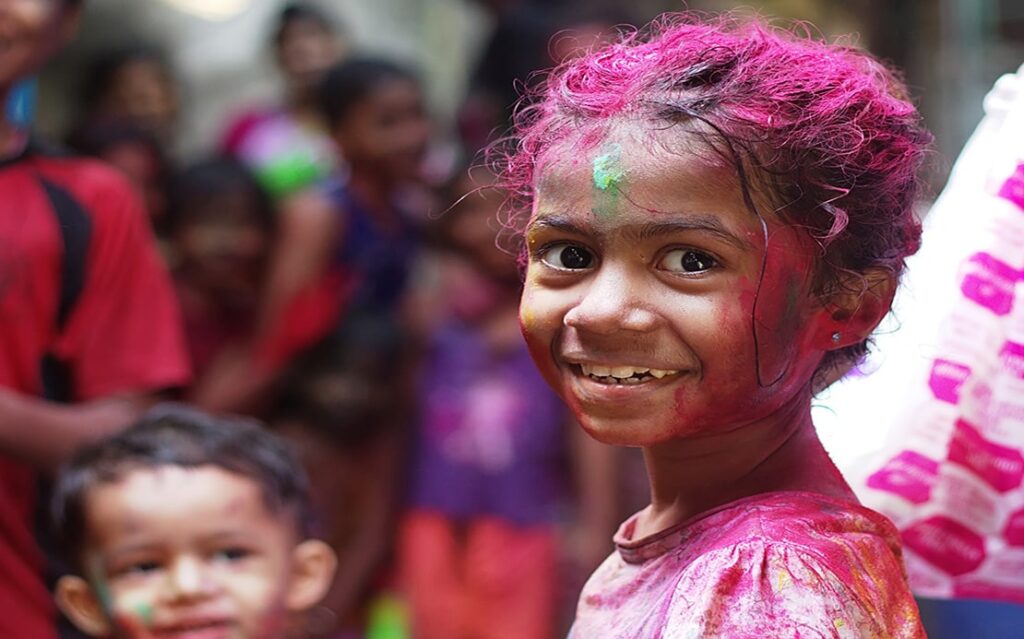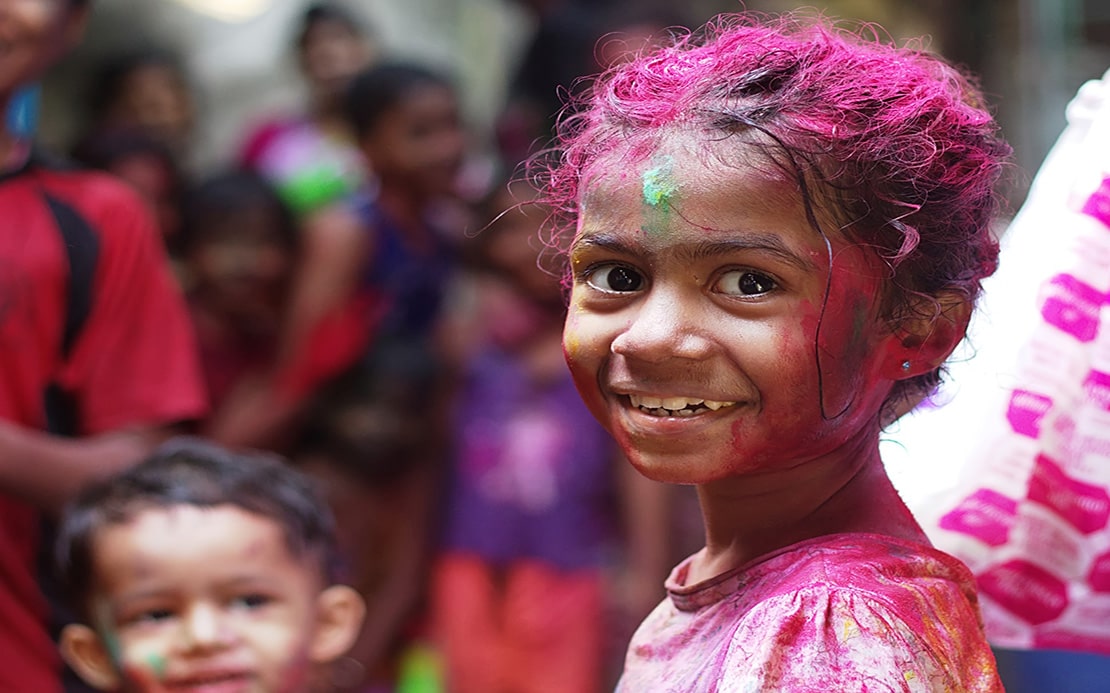Holi is not based on a specific god but rather encompasses various cultural, religious, and mythological themes from Hindu mythology. However, the festival is closely associated with several Hindu deities and legends, each contributing to its significance and symbolism:

- Lord Krishna: Holi is most commonly associated with Lord Krishna, a revered deity in Hinduism known for his playful and mischievous nature. The festival is celebrated as a commemoration of Krishna’s divine love and playful antics with Radha and the gopis (cowherd girls) in the village of Vrindavan. According to mythology, Krishna would playfully apply colors on Radha and her companions, initiating the tradition of playing with colors during Holi. The colorful revelry of Holi symbolizes the joyous and playful spirit of Krishna and his devotees.
- Legend of Prahlad and Holika: Another legend associated with Holi is the story of Prahlad, a devotee of Lord Vishnu, and his demoness aunt Holika. Prahlad’s devotion to Vishnu angered his father, the demon king Hiranyakashipu, who attempted to kill him. Holika, immune to fire, was tricked into sitting in a bonfire with Prahlad, but divine intervention saved Prahlad while Holika perished in the flames. This legend symbolizes the victory of good over evil and the triumph of righteousness.
- Radha and Krishna’s Divine Love: Holi is also celebrated as a festival of love and devotion, inspired by the divine love between Radha and Krishna. Their eternal bond of love and affection is celebrated through songs, dances, and rituals during Holi. The festival is an occasion for devotees to express their devotion and love for the divine couple, seeking their blessings for happiness, prosperity, and spiritual fulfillment.
While Holi is not based on a single god, its celebration incorporates elements of devotion, mythology, and symbolism associated with various Hindu deities and legends. The festival serves as a vibrant expression of joy, love, and unity, bringing people together to celebrate the triumph of good over evil and the arrival of spring.
